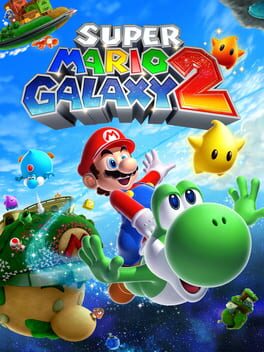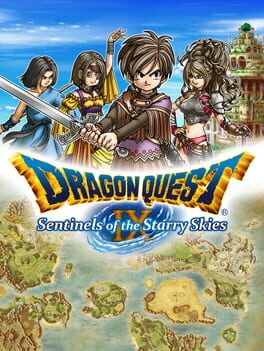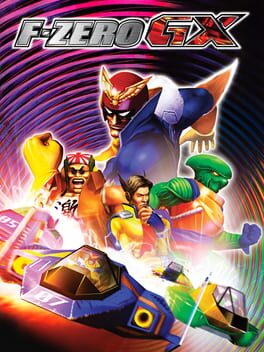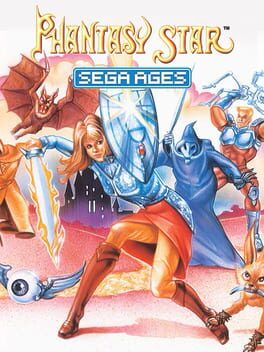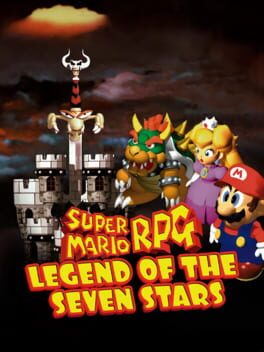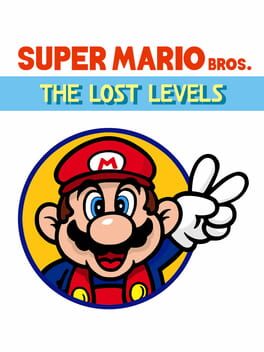misc
Bio
Nothing here!
Badges

Roadtrip
Voted for at least 3 features on the roadmap

Best Friends
Become mutual friends with at least 3 others

3 Years of Service
Being part of the Backloggd community for 3 years

Noticed
Gained 3+ followers

On Schedule
Journaled games once a day for a week straight
Favorite Games
041
Total Games Played
001
Played in 2024
000
Games Backloggd
Recently Played See More
Recently Reviewed See More
To paraphrase Merleau-Ponty, a ghost is anything we experience through only one sense. In this way all videogames have to deal with the problem of ghosts: no matter how detailed or realistic game graphics become, they exist at the same level of believability. They make us ask: I can see an object, but can I touch it? It appears, but does it exist within an interactive world? Does it disappear when I turn my head, and can I, through various mechanisms, render it non-existant, something I don’t need to believe in because of what the rules of the games actually deem important?
The solution of Luigi’s Mansion: Dark Moon, and the core of its gameplay, is to try to make everything interactive. Luigi’s vacuum attacks the world with gusts of wind, and fabric, table-set knickknacks, and propellers take flight. This, of course, isn’t enough on its own, and so we get additional incentive. The game hides stacks of literal money in seemingly cursory objects, it places hovering “A” presses over containers both full and empty, and its “hidden content” (gems, star ratings, Boos) are all discoverable, if working without a guide, only by exhausting every interactive substance in every corner of the world. There are few patterns in this game; everything is everything.
Working with Vancouver-based developer Next Level Games, Nintendo’s supervisors (Yoshihito Ikebata and, in an advisory capacity, Shigeru Miyamoto) prodded the North American team to de-emphasize the obvious pop-cultural roots of the series. I haven’t seen any Ghostbusters movies (and likely never will), but aside from the glowing primary colour design of the ghosts, this seems to have been largely successful. Instead they apparently brought up Japanese TV dramas that told self-contained, episodic stories. Many have pointed out that there is something unsatisfying about the mission-based structure of Dark Moon: there’s little less welcome than repeatedly being woken up from a dream that hovers on the edge of a nightmare (nothing is scary in the game, but the game pushes us to notice all the subtle ways that Luigi projects fear). And in between each mission the game interjects a frame narrative involving a Professor, who isn’t so much a scientist or researcher as a colonizer of the ghost world (he does little besides collect specimens, test out technology and display a psychopathic personality).
I’m not sure that total immersion is what I’m really interested in with games, but it’s the goal most developers set; the concessions paid with handheld games to the interruptions of the outside world are, it seems, less and less of a priority (from what I can tell without having the console, Switch games, despite being part handheld, rarely act this way). But I’m even less sure that episodic storytelling is something that makes games better, especially when the variations on a theme, as in Dark Moon, involve little more than moving objects around behind a player’s back. (This would also be more effective it happened out of sight instead of as part of “new” missions.)
Games want to look like movies but unfold like television shows most of the time, and yet their gameplay seems to demand an altogether different kind of framing. Like almost all games, each setting in Dark Moon climaxes in a boss fight. Some of them, like the one against a staircase, are pretty inventive. But this order of experiences suggests one is training and building up one’s senses in a Luigi’s Mansion game (or in a survival horror game in general; LM is, from player movement on down, modelled on Resident Evil) for combat. In those moments when the music and lighting change, and the vacuum cleaner changes from an exploratory aid into a weapon, the game stops asking players to reach out into a ghostly illusion, and becomes a rapid-reaction viewing of a gauge that ticks down from 20, 50, 100, or more to zero.
The solution of Luigi’s Mansion: Dark Moon, and the core of its gameplay, is to try to make everything interactive. Luigi’s vacuum attacks the world with gusts of wind, and fabric, table-set knickknacks, and propellers take flight. This, of course, isn’t enough on its own, and so we get additional incentive. The game hides stacks of literal money in seemingly cursory objects, it places hovering “A” presses over containers both full and empty, and its “hidden content” (gems, star ratings, Boos) are all discoverable, if working without a guide, only by exhausting every interactive substance in every corner of the world. There are few patterns in this game; everything is everything.
Working with Vancouver-based developer Next Level Games, Nintendo’s supervisors (Yoshihito Ikebata and, in an advisory capacity, Shigeru Miyamoto) prodded the North American team to de-emphasize the obvious pop-cultural roots of the series. I haven’t seen any Ghostbusters movies (and likely never will), but aside from the glowing primary colour design of the ghosts, this seems to have been largely successful. Instead they apparently brought up Japanese TV dramas that told self-contained, episodic stories. Many have pointed out that there is something unsatisfying about the mission-based structure of Dark Moon: there’s little less welcome than repeatedly being woken up from a dream that hovers on the edge of a nightmare (nothing is scary in the game, but the game pushes us to notice all the subtle ways that Luigi projects fear). And in between each mission the game interjects a frame narrative involving a Professor, who isn’t so much a scientist or researcher as a colonizer of the ghost world (he does little besides collect specimens, test out technology and display a psychopathic personality).
I’m not sure that total immersion is what I’m really interested in with games, but it’s the goal most developers set; the concessions paid with handheld games to the interruptions of the outside world are, it seems, less and less of a priority (from what I can tell without having the console, Switch games, despite being part handheld, rarely act this way). But I’m even less sure that episodic storytelling is something that makes games better, especially when the variations on a theme, as in Dark Moon, involve little more than moving objects around behind a player’s back. (This would also be more effective it happened out of sight instead of as part of “new” missions.)
Games want to look like movies but unfold like television shows most of the time, and yet their gameplay seems to demand an altogether different kind of framing. Like almost all games, each setting in Dark Moon climaxes in a boss fight. Some of them, like the one against a staircase, are pretty inventive. But this order of experiences suggests one is training and building up one’s senses in a Luigi’s Mansion game (or in a survival horror game in general; LM is, from player movement on down, modelled on Resident Evil) for combat. In those moments when the music and lighting change, and the vacuum cleaner changes from an exploratory aid into a weapon, the game stops asking players to reach out into a ghostly illusion, and becomes a rapid-reaction viewing of a gauge that ticks down from 20, 50, 100, or more to zero.
